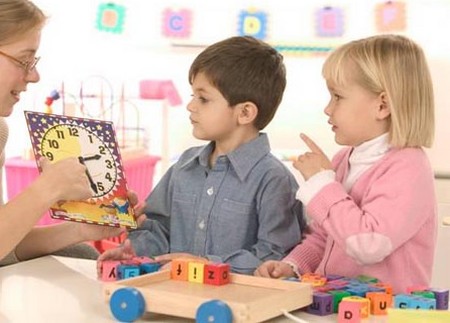Best Way to Encourage a Child’s Sociable Behavior through Play
Sociable behavior has three main features, all of which can be encouraged through play:
- Sharing. Sharing has two forms. First, a child might share in order to benefit personally; for example, she shares her snack with others in the hope that this will make them want to play with her. Second, a child might share even when she gets no obvious personal benefit; for example, she shares her new toy with her friends simply because she likes them. This, perhaps, is a more genuine type of sharing because it involves a child doing something for nothing.
- Cooperation. This happens when a child works with a number of others so that every single one of them benefits; for example, when a group of children work together to build a “den” in which to play. This is quite different from competition that happens when each child works alone, trying to get the reward for herself; for example, when children race against each other on field day.
- Empathy. The ability to share and experience the emotional state of another person. An empathic child (unlike an antisocial one) is able to understand and appreciate the feelings of others.
Many parents have an intuitive feeling that specific toys can have an adverse influence on their child’s behavior; consequently, they may not allow their child to have toy guns, knives, and swords because of the worry that such toys might encourage the child to behave aggressively toward others. Research findings suggest that this concern has some foundation.
In one study, investigators examined the extent to which the characteristics of a toy determine the way a child plays with it. Over sixty boys, aged between three and six years, were involved; they played in pairs, in a series of twelve-minute sessions. During these play periods, the children were given toys, three of which were designed to present aggressive cues (an inflatable doll in the form of a well-known space villain; mechanical boxing robots; small Star Wars characters with a spaceship), and three of which were designed to present sociable cues (a basketball with a hoop that had to be held by one player while the other threw the ball into it; a peg-board that lit up when one child pressed a switch while another inserted pegs; a toy ambulance with small paramedic figures). Results confirmed that sociably cued toys encourage children to take turns and cooperate with each other, while aggressively cued toys encourage them to be verbally and physically hostile toward each other.
Investigate all the toys your child plays with, and categorize them as either sociable or aggressive. You may be surprised to discover the range of toys that present antisocial, aggressive cues.

Psychologists have also found that when children play games that require sociable behavior, they become more sociable and caring toward others. Such games can be very simple. For instance, lay a piece of newspaper on the floor, and tell your child and some of her friends that they all have to place at least one foot and one hand on the paper. The smaller the piece of newspaper and the larger the group, the more fun the game becomes. This activity has the two key characteristics that make a game sociable: first, the children have to cooperate with each other in order for everyone in the group to be on the paper, and second, they have to share the space on the paper with each other. It’s great fun—children take great delight in twisting and tangling themselves.
Categories
Advertisements
Recent Articles
 How to Understand Bed Sizes – A Small Guide
How to Understand Bed Sizes – A Small Guide How to Select Some Must Have Kitchen Accessories
How to Select Some Must Have Kitchen Accessories Best Way to Change a Car Tire
Best Way to Change a Car Tire Best Way to Write an Affirmation
Best Way to Write an Affirmation Best Way to Take Charge of Your Financial Life
Best Way to Take Charge of Your Financial Life Best Way to Survive a Party When You Don’t Know Anyone
Best Way to Survive a Party When You Don’t Know Anyone Best Way to Stop Self Sabotaging Yourself
Best Way to Stop Self Sabotaging Yourself Best Way to Start Journal Writing
Best Way to Start Journal Writing Best Way to Speak with a Powerful Voice
Best Way to Speak with a Powerful Voice Best Way to Simplify Your Life
Best Way to Simplify Your Life Best Way to Respond to a Put-Down
Best Way to Respond to a Put-Down Best Way to Reduce Acne Breakouts
Best Way to Reduce Acne Breakouts Best Way to Recover from Dining Disasters
Best Way to Recover from Dining Disasters Best Way to Quit Your Job Gracefully
Best Way to Quit Your Job Gracefully Best Way to Make Your Own Website
Best Way to Make Your Own Website


Leave a Reply